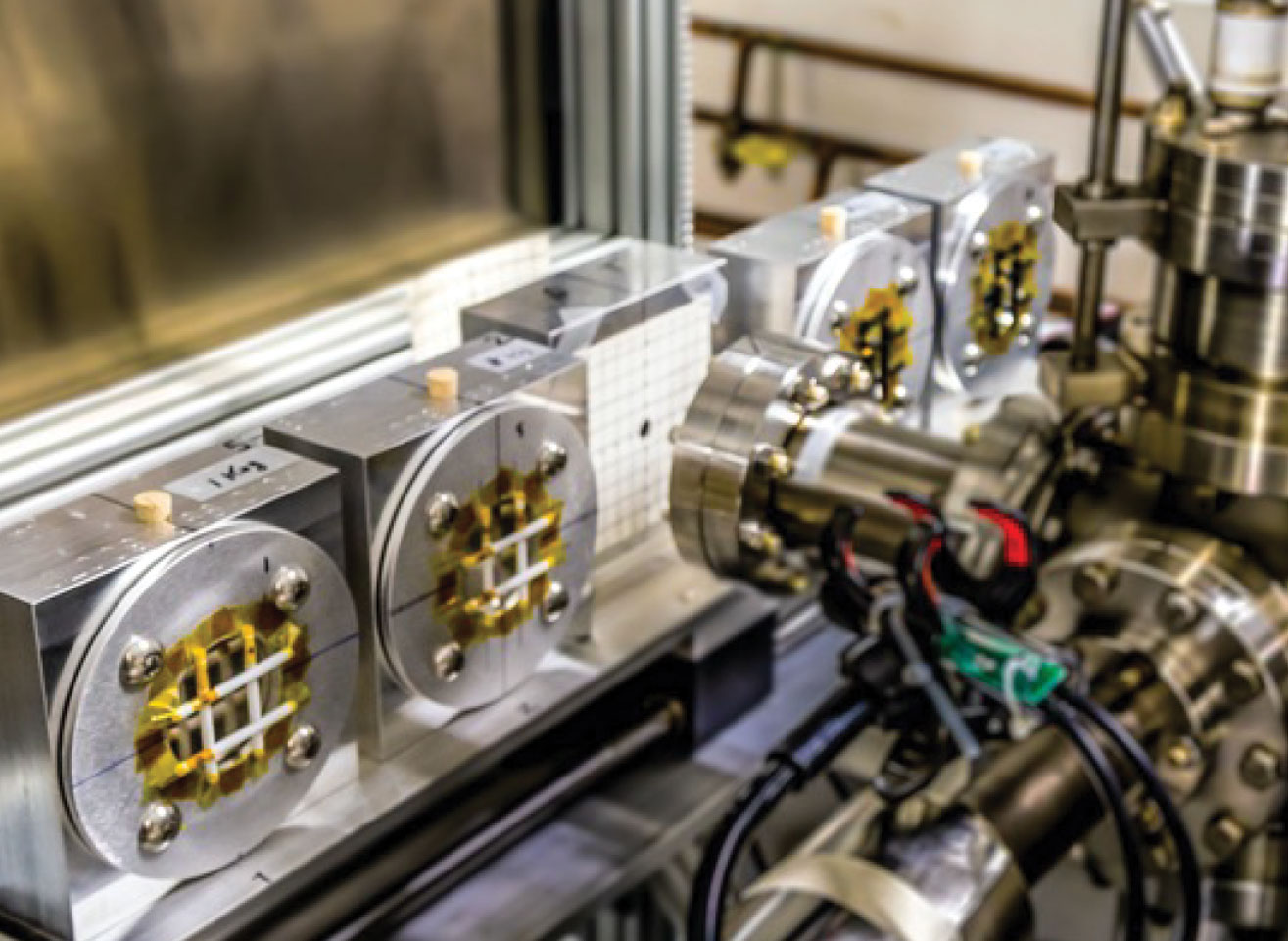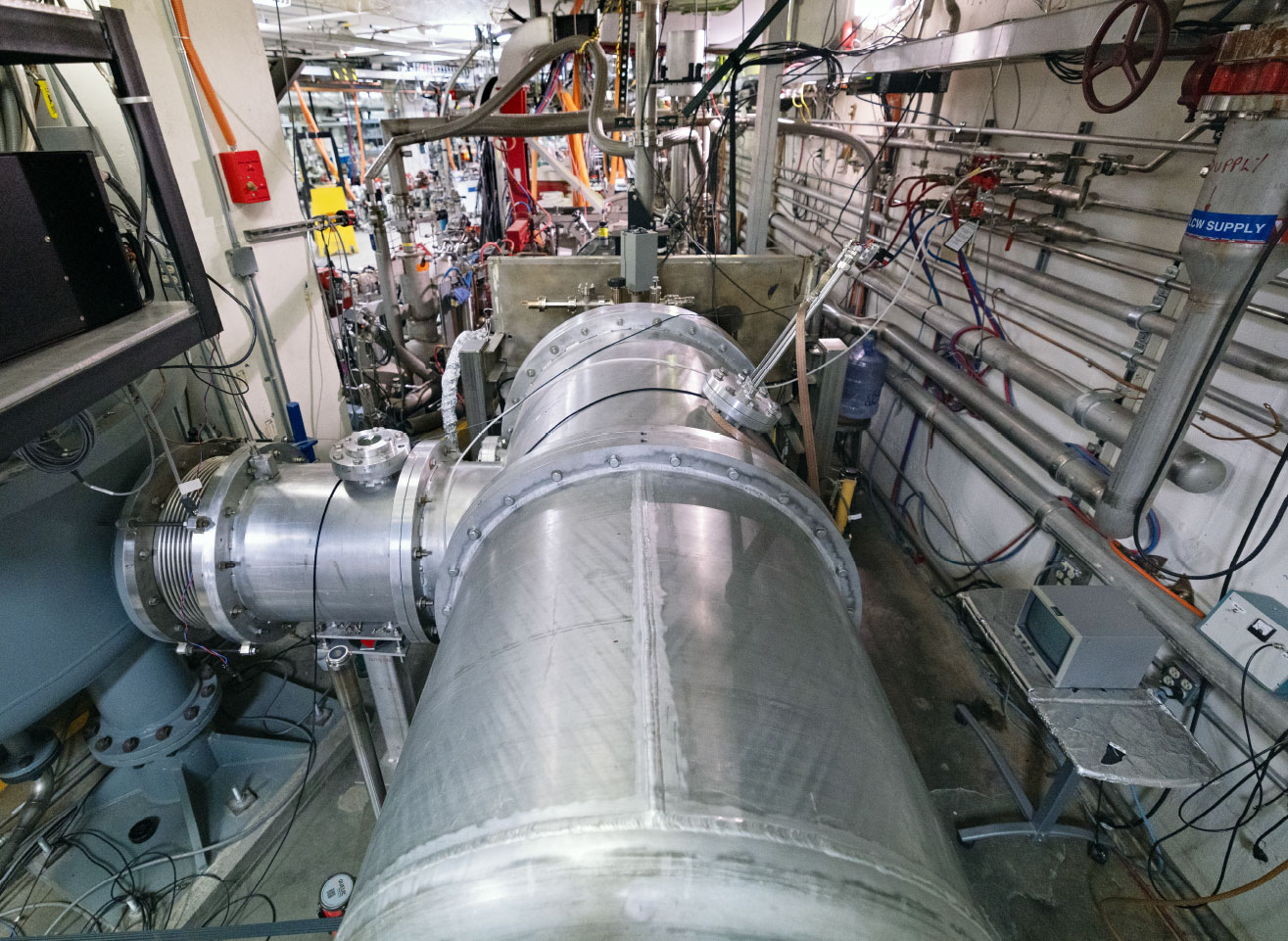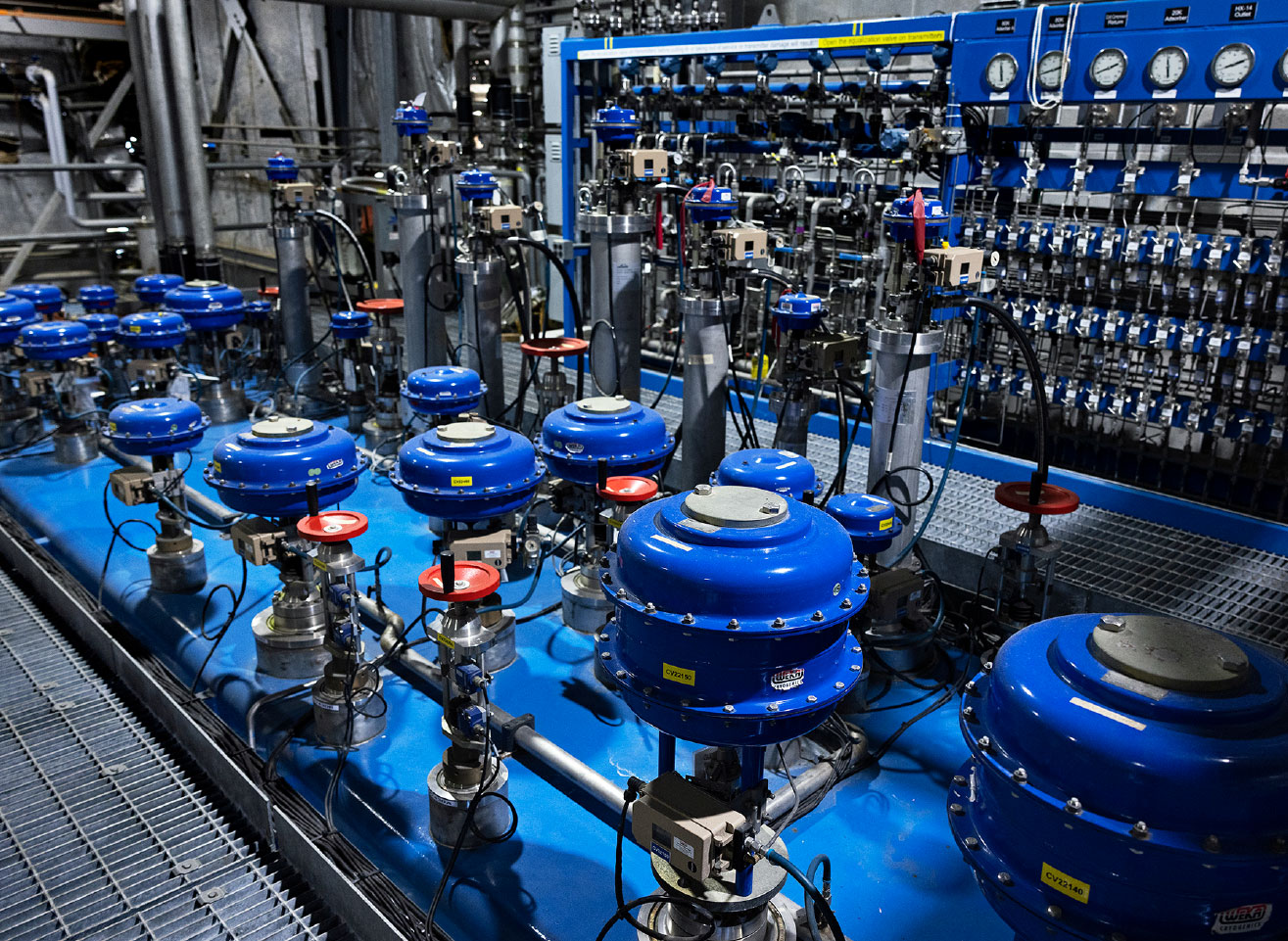Research In Action
Technology that Overcomes
Movement During Imaging

Biomedical research depends heavily on experiments involving animal models, but studies can be limited by the need to immobilize subjects during imaging. Jefferson Lab, in collaboration with Oak Ridge National Laboratory and Johns Hopkins University, has been developing a system for imaging in un-anesthetized, unrestrained mice. Mouse brain studies using Jefferson Lab technology are now under way at JHU, and the methodology is being extended to radioisotope imaging in biofuel and environmental research.
FEL Technology Helps
Create Advanced Materials

Jefferson Lab built and now operates the world’s most powerful tunable laser, the Jefferson Lab Free Electron Laser (FEL). FELs based on Jefferson Lab’s superconducting electron-accelerating
technology are being used to explore applications in science, industry and national defense. Prospective products include durable yet attractive polymer textiles; easily recyclable beverage and food packaging; corrosion-resistant metals; micromachined mechanical and optical components; and electronics for use in harsh conditions.
Radioisotope Applications
Improve Daily Life & Industry

Radioisotopes developed at facilities like Jefferson Lab have found their way into our lives in many ways:
- Americium is used in smoke detectors and to help locate oil wells.
- Cobalt irradiation helps sterilize surgical instruments and keep our food supply safe.
- Iridium is used in cancer treatment.
Refrigeration technologies developed for superconducting particle accelerators, which must be kept super-cold, are now available for commercial use. NASA uses similar processes to replicate outer space conditions.